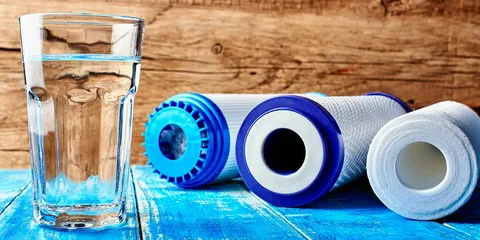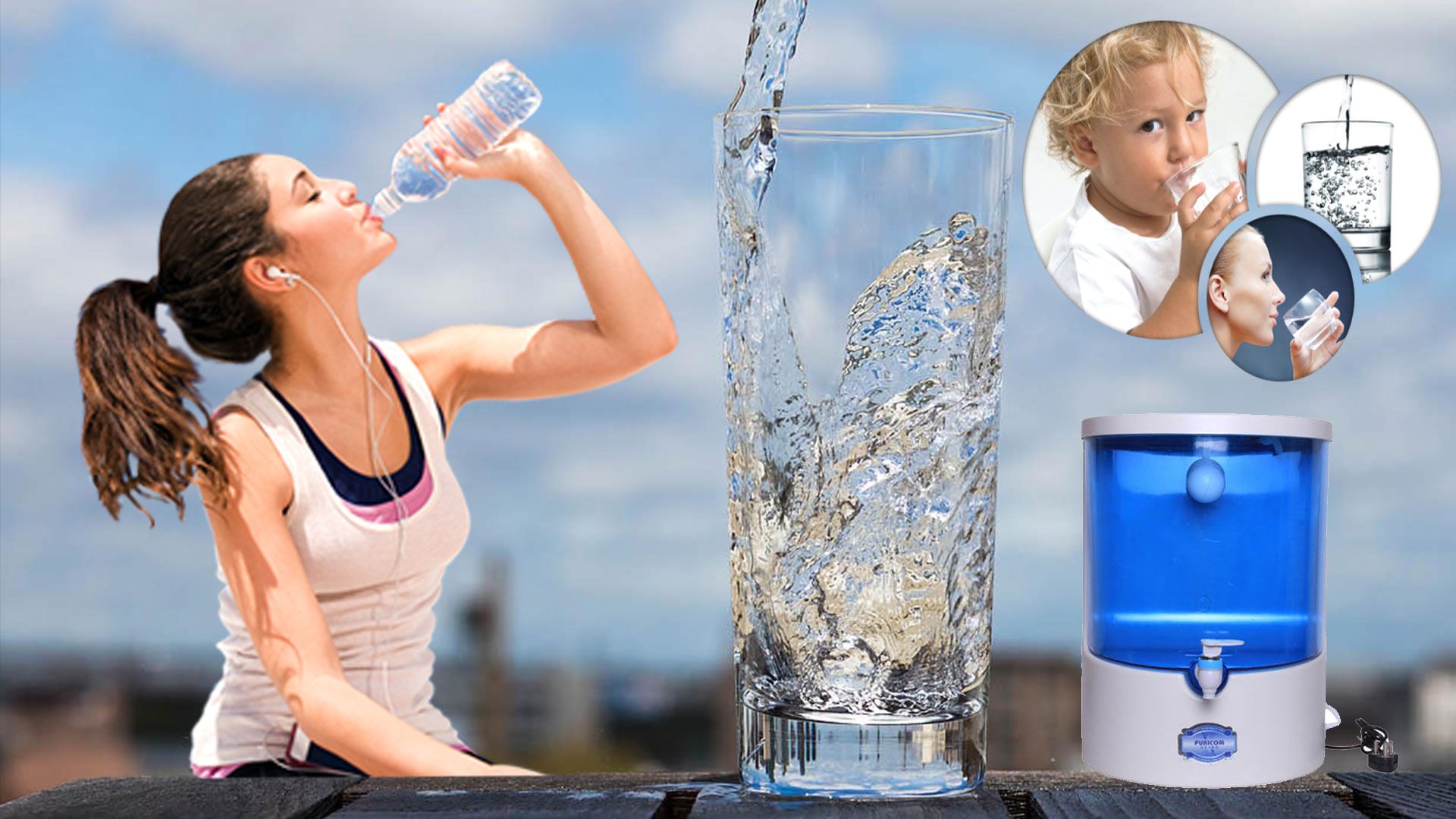A water purifier filter ensures your drinking water’s quality and safety. It works to remove impurities, contaminants, and particles from your water supply, providing you with clean and healthy water for consumption. However, regular maintenance and care are required for your water purifier-filter to continue performing optimally. This blog post will discuss maintaining your water purifier-filter for optimal performance, including understanding how it works, recognising when it’s time to change the filter, choosing the right one, and more.
Understanding How Your Water purifier-filter Works
Water purifier-filters utilise a sophisticated blend of physical filtration and chemical extraction to purify your drinking water from many impurities. The core of these purification systems can vary, including activated carbon, ceramic filters, and reverse osmosis membranes, each designed to target specific contaminants.
Activated carbon, for example, is particularly skilled at capturing chemical pollutants and chlorine, commonly found in municipal water supplies, through adsorption, where these impurities are attracted and held on the surface of the carbon particles. Ceramic filters, on the other hand, rely on their pore size to physically block pathogens and sediments from passing through.
Reverse osmosis membranes offer a more intensive purification process, removing many contaminants, including bacteria, viruses, and dissolved solids, by forcing water through a semi-permeable membrane. Understanding the specific mechanics of your water purifier-filter and the type of impurities it is most effective against is vital for maximising its utility and ensuring the system’s longevity. Each type of filter has its strengths, making it crucial to align your choice with the particular needs of your household’s water supply.
Recognising When It’s Time to Change Your Filter
Identifying the optimal moment to replace your water purifier-filter is paramount to maintaining the quality of your drinking water. The performance of your filter can diminish over time, leading to less efficient removal of contaminants. A tell-tale sign that your filter requires attention is a noticeable reduction in the water’s flow rate. This can indicate that the filter is becoming clogged with particles and needs to be changed.
Additionally, any alteration in the taste or odour of the water should prompt an immediate check of the filter. These changes could signify that the filter can no longer effectively purify the water, allowing undesired impurities to remain. It’s also wise to be vigilant for any visible sediment or discolouration in the water, as these can be direct signs of a filter reaching its capacity.
Manufacturers typically suggest changing the filter every six months to a year, but this can vary based on the volume of water used and the initial quality of your water supply. Adhering to these guidelines is crucial, but so is using your judgment to assess the filter’s performance between scheduled changes. Regular inspections and being attuned to the signs of a declining filter can help ensure that your water purifier-filter effectively delivers clean and safe drinking water to your household.
Choosing the Right House Water Filter
Selecting the appropriate house water filter for your household demands a clear understanding of the contaminants in your water supply. Various filters are engineered to target and eliminate different impurities; thus, pinpointing the specific pollutants in your water is the first step towards making an informed decision. To identify the contaminants, engage in a thorough water quality test, either through a professional service or by utilising a home testing kit.
Upon establishing the nature of impurities, align your filter choice with those findings. For instance, a filter with a robust mechanical filtration capacity would be ideal if your water has a high sediment content. Conversely, consider filters incorporating activated carbon or reverse osmosis technology for chemical pollutants or heavy metals.
Factor in the filter’s longevity and maintenance requirements. A longer-lasting filter may represent a higher initial investment but could prove more economical over time due to reduced replacement frequency. Also, evaluate the ease of maintenance since some filters require more frequent servicing, which could impact your convenience and overall satisfaction.
Remember, the efficiency of a water purifier-filter is not just about its ability to clean water but also about how well it fits into your lifestyle and meets the specific needs of your home’s water supply. By carefully considering these aspects, you can ensure you select a filter that delivers both performance and practicality.
Step-by-Step Guide to Changing Your Water purifier-filter
Swapping out your water purifier-filter is a straightforward task that can be performed without professional help. Each water purifier model might have its unique method for filter replacement, so it’s pivotal to consult the manufacturer’s guide before starting. However, a general approach to changing the filter can be outlined as follows:
- Ensure the main water supply connected to the filter is turned off to prevent leaks or water damage.
- Carefully remove the housing or compartment containing the old filter cartridge. Depending on the purifier’s design, this may require unscrewing or unclipping parts. Exercise caution to avoid damaging the unit.
- Remove the old filter cartridge. It’s advisable to wear gloves for this step, as the filter might be saturated with impurities.
- Before installing the new filter, check it for possible damage or defects. If everything looks in order, insert the new filter cartridge into the housing. Ensure it’s securely placed according to the instructions provided, as an incorrect installation could affect the cleaner’s performance.
- Reassemble any disengaged parts of the purifier. Ensure that all components are tightly secured to prevent leaks.
- Reactivate the water supply and let the system run for several minutes. This initial flush helps clear out any carbon fines (in the case of activated carbon filters) or other residues, ensuring the water produced is clean and ready for consumption.
Remember, while changing the filter is essential, properly reassembling your water purifier is equally important to guarantee efficient operation.
The Importance of Regular Maintenance Beyond Filter Replacement
Ensuring the continued efficiency of your water purifier system extends beyond merely swapping out the filter at recommended intervals. The upkeep of the unit as a whole plays a crucial role in its performance. Regular cleansing of the filter housing removes any accumulated debris or sediment that could hinder water flow or quality. Additionally, periodic inspections for leaks are vital. Even minor leaks can not only waste water but also compromise the system’s structural integrity over time, leading to potential contamination.
Furthermore, sanitising the system is advisable to prevent the growth of bacteria and other pathogens within the water purifier. This level of maintenance safeguards the longevity of the water purifier-filter and ensures the health and safety of your drinking water. By incorporating these practices into your routine, you contribute to the prolonged effectiveness of your water purifier system, guaranteeing it operates at peak performance for many years.
 Troubleshooting Common Water Filter Machine Problems
Troubleshooting Common Water Filter Machine Problems
Encountering issues with your water filter machine can be frustrating, but many common problems can be easily solved with some basic troubleshooting steps. If your machine leaks, immediately check all connections and fittings for tightness. A loose connection can often be the culprit, and tightening it can resolve the issue. A clogged filter is usually to blame for reduced water flow. Inspect the filter and replace it if necessary to restore proper water flow. Additionally, ensuring no kinks or bends in the input line could restrict water movement.
Should you notice an unusual taste or odour in the water, this can indicate that the filter is either not correctly installed or has reached the end of its lifespan and needs replacing. Sometimes, the issue may stem from the water supply rather than the filter. Conducting a water quality test can help determine if the problem is with the supply or the filter.
For persistent issues these steps do not address, consult the user manual for specific troubleshooting tips related to your model or contact a professional. Regularly monitoring and maintaining your machine will help prevent many common problems, ensuring your water remains clean and safe for consumption.
The Environmental Impact of Water purifier-filters and How to Minimise It
Water purifier-filters, whilst integral to delivering safe and potable water, bear an environmental cost primarily through plastic waste generation. As these filters end their service life, they contribute to the burgeoning issue of landfill waste, with plastic components taking hundreds of years to decompose. This scenario presents a pressing need for responsible disposal and recycling practices.
To address these environmental concerns, users are encouraged to participate in filter recycling programmes, which manufacturers increasingly offer. These programmes are designed to repurpose or safely dispose of used filters, mitigating the adverse environmental impact. Additionally, exploring the market for eco-friendly filter options can significantly reduce one’s carbon footprint. Certain brands have made strides in creating filters from biodegradable or recyclable materials, offering a more sustainable alternative to traditional filters.
Engaging in these practices not only aids in conserving natural resources but also supports the global initiative to reduce plastic pollution. By taking these steps, individuals can play a pivotal role in fostering a sustainable environment while still ensuring access to clean drinking water. The collective effort towards responsible consumption and disposal of water purifier-filters can make a substantial difference in minimising their environmental footprint.
Conclusion
Ensuring your water purifier-filter’s efficiency and longevity involves committing to routine care and timely replacements. Understanding your system’s mechanics, coupled with vigilance for signs of wear or contamination, empowers you to provide the necessary upkeep. Engaging with the specifics of your water supply and its unique demands on your filtration system is key to making informed choices about filter selection. Through conscientious care, selection, and disposal, the effective management of water purifier-filters not only supports the well-being of your household but also contributes to the well-being of our planet.
FAQs
Q: What is the recommended frequency for changing my water purifier-filter?
A: The frequency of filter replacement can vary; however, it is typically advised to do so every six months to a year. This timeline can be affected by the volume of water consumed and the initial purity of your water source.
Q: Is cleaning a water purifier-filter possible instead of replacing it?
A: Some types of filters may allow for cleaning, but for the majority, replacement is necessary to maintain optimal purification performance. Cleaning may not effectively remove all contaminants, so replacing the filter is usually the safer option.
Q: How can I tell when to replace my water purifier-filter?
A: Indicators include a noticeable decline in water flow rate, any change in the taste or odour of the water, or visible sediment or discolouration. These signs suggest that the filter is no longer performing at its best and requires replacement.
Q: Can I test my water quality at home to determine if my filter needs changing?
A: Home testing kits are available and can indicate the water quality. However, these should not replace professional assessments for a comprehensive understanding of your water’s purity and the efficiency of your filter.
| Other Good Articles to Read |
| skank blogs |
| unreal blogs |
| tba blogs |
| all city forums |
| dany blogs |
| refuge blogs |
| the music blogs |
| key forums |
| the big blog theory |
| joe blogs |
| blogs 4 me |
| Blogs Emon |
| Related Business Listings |
| Contact Directory |
| Local Business Profiles |



